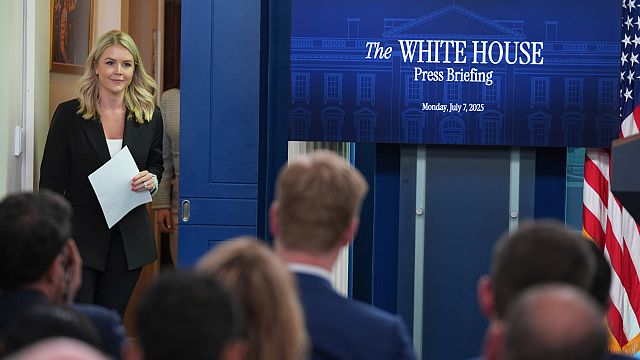Supreme Court Clears Way for Trump Administration’s Mass Firings of Federal Workers


The Trump administration can move forward with plans to slash the federal work force and dismantle federal agencies, the Supreme Court announced on Tuesday. The decision could result in job losses for tens of thousands of employees at agencies including the Departments of Housing and Urban Development, State and Treasury.
The order, which lifted a lower court’s ruling that had blocked mass layoffs, was unsigned and did not include a vote count. That is typical in such emergency applications. Justice Ketanji Brown Jackson wrote a public dissent.
The case represents a key test of the extent of President Trump’s power to reorganize the government without input from Congress. The justices’ order is technically only temporary, guiding how the administration can proceed while the challenge to Mr. Trump’s plans continues. But in practice, it means he is free to pursue his restructuring plans, even if judges later determine that they exceed presidential power.
In a two-paragraph order, the justices wrote that they had concluded that “the government is likely to succeed on its argument” that President Trump’s executive order announcing plans to downsize the government was legal. The justices added that they had not expressed a view on the legality of specific layoffs or reorganizations by the Trump administration.
It was the latest in a series of recent victories for the Trump administration before the Supreme Court on emergency requests related to the president’s efforts to rapidly reshape government.
The decision followed a major ruling on June 27, when the Supreme Court limited the ability of judges to block President Trump’s policies nationwide.
Although the vote count was not listed, the order included a short public concurrence by Justice Sonia Sotomayor, one of the court’s three liberals, suggesting broad agreement among the justices on the outcome. Justice Sotomayor wrote that she agreed with the court’s decision, but she added that the trial court was “free to consider” the legality of the specifics of the Trump administration’s downsizing plans.
In a 15-page dissent, Justice Jackson sharply criticized the court’s decision, calling it “not only truly unfortunate but also hubristic and senseless” and arguing that it undercut the authority of trial court judges.
“It is not this court’s role to swoop in and second-guess a lower court’s factual findings,” Justice Jackson wrote, echoing her dissent last month in the case limiting the power of lower-court judges to block administration policies nationwide.
She said that “no one seriously disputes” that the president’s executive order would “lead to enormous real-world consequences,” including “the dismantling of much of the federal government as Congress has created it.”
“What one person (or president) might call bureaucratic bloat is a farmer’s prospect for a healthy crop, a coal miner’s chance to breathe free from black lung, or a preschooler’s opportunity to learn in a safe environment,” she wrote.
In recent weeks, the justices have issued other emergency decisions allowing members of the Department of Government Efficiency to gain access to sensitive records of millions of Americans held by the Social Security Administration; ending a humanitarian program intended to give temporary residency to more than 500,000 immigrants from countries facing war and political turmoil; and granting, for now, Mr. Trump’s request to remove the leaders of two independent agencies.
The emergency application on mass firings across federal agencies arose from an executive order, signed by Mr. Trump in February, directing officials to begin putting together plans for “large-scale” cuts to the federal work force.
After the order was announced, several labor unions, advocacy groups and local governments sued to try to block it.
On May 9, Judge Susan Illston of the Federal District Court for the Northern District of California temporarily paused the administration’s plans for layoffs and program closures, preventing two dozen agencies from moving forward with the largest phase of the president’s efforts to shrink the federal work force.
Judge Illston initially issued a two-week pause. Later that month, she announced a longer-term block on the administration’s plan, which she said had created an urgent threat to critical services provided by the government.
She also said that such cuts were most likely illegal without approval from Congress. The judge concluded that the president cannot conduct large-scale reorganization of the executive branch without cooperation with Congress and following the process that the legislative branch has approved for government reorganization. She froze mass layoffs and agency closures as the lower-court case proceeded.
In her initial ruling, Judge Illston wrote that it was “the prerogative of presidents to pursue new policy priorities and to imprint their stamp on the federal government.” But she added that in order to make “large-scale overhauls of federal agencies, any president must enlist the help of his coequal branch and partner, the Congress.”
The Trump administration appealed the ruling, but a divided three-judge panel of the U.S. Court of Appeals for the Ninth Circuit upheld Judge Illston’s order on May 30.
The Trump administration then filed an emergency application with the justices.
In the filing, D. John Sauer, the solicitor general, said that the trial court judge’s order barred “nearly the entire executive branch — 19 agencies, including 11 cabinet departments” — from carrying out the president’s plans to reshape government.
Mr. Sauer argued that the lower court’s order “rests on the indefensible premise” that the president must have “explicit statutory authorization” from Congress to act on “internal personnel decisions of the executive branch.”
In response, the challengers argued that lower courts had correctly determined that the president’s executive order was likely to have exceeded his authority and violated the separation of powers.
“For more than 100 years, presidents across the political spectrum have obtained authorization from Congress before undertaking reorganization of the federal government,” the challengers wrote in a brief to the justices.
They urged the justices to reject the government’s request to allow Mr. Trump to act before the separation-of-powers issues were fully litigated.
“There will be no way to unscramble that egg,” the challengers wrote. “If the courts ultimately deem the president to have overstepped his authority and intruded upon that of Congress, as a practical matter there will be no way to go back in time to restore those agencies, functions and services.”
Among those affected immediately are nearly 2,000 employees at the State Department who have been targeted for layoffs as part of a reduction in force. Those layoffs have been on hold since the preliminary injunction.
Eileen Sullivan contributed reporting.
What's Your Reaction?
 Like
0
Like
0
 Dislike
0
Dislike
0
 Love
0
Love
0
 Funny
0
Funny
0
 Angry
0
Angry
0
 Sad
0
Sad
0
 Wow
0
Wow
0









































